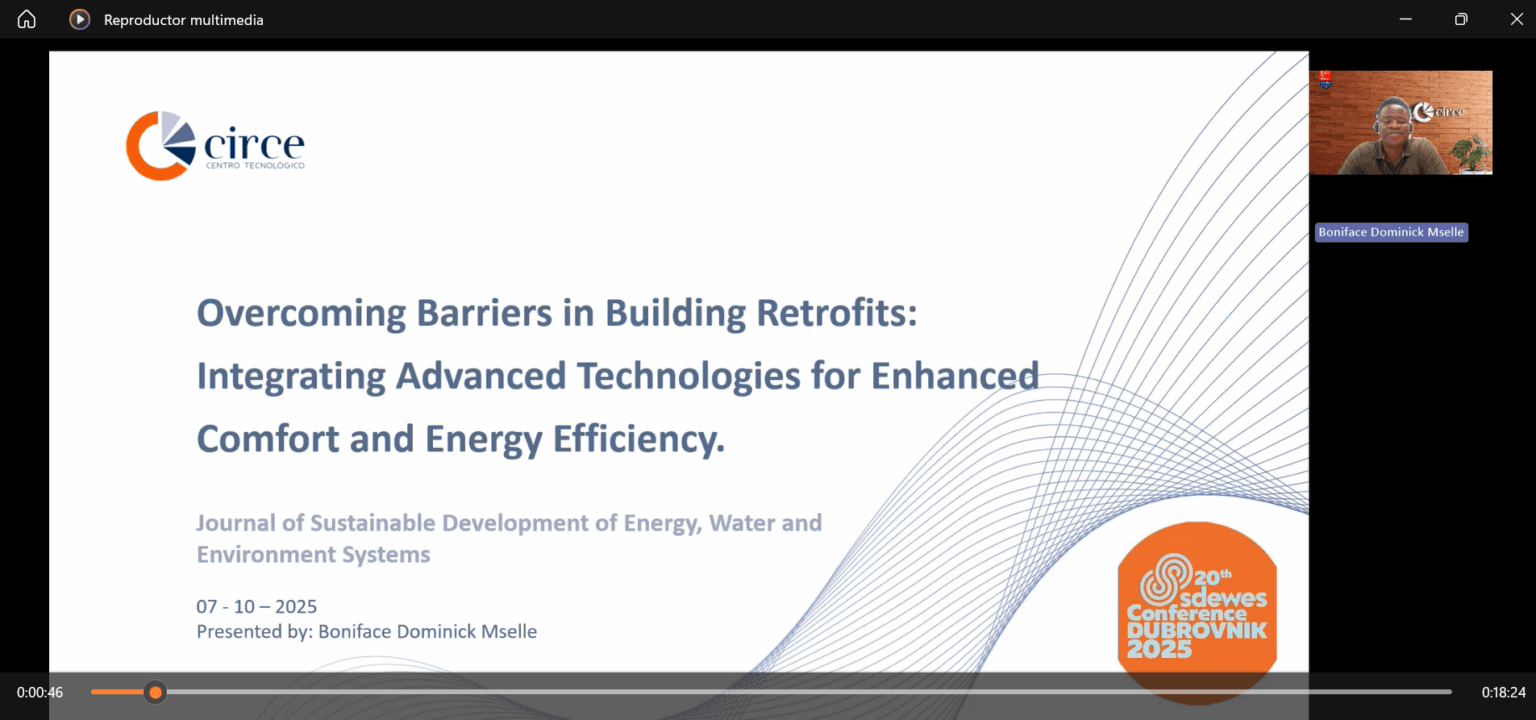
At the SDEWES 2025 Conference in Dubrovnik, CIRCE researcher Boniface Dominick Mselle presented InCUBE’s latest findings on bridging the performance gap in building retrofits through data-driven diagnostics and real-world monitoring.
During the 2025 Dubrovnik Conference on Sustainable Development of Energy, Water and Environment Systems (SDEWES), Boniface Dominick Mselle from CIRCE shared insights from InCUBE’s research on improving energy efficiency and comfort in building retrofits.
His presentation, “Overcoming Barriers in Building Retrofits: Integrating Advanced Technologies for Enhanced Comfort and Energy Efficiency,” highlighted a key challenge in the sector: traditional simulation models often fail to reflect actual building performance, overlooking occupant behavior and real-life conditions.
The study, based on 1970s-era social housing in Zaragoza, Spain, revealed significant discrepancies between theoretical energy projections and real consumption patterns. Although measured energy use was lower than predicted, indoor comfort levels were frequently sub-optimal — with about half the monitored time falling below recommended temperature ranges and high CO₂ levels observed in winter due to inadequate ventilation.
These findings underscore the need for hybrid approaches that combine empirical monitoring with simulation models, enabling more accurate renovation strategies that prioritize both energy performance and indoor environmental quality (IEQ).
Mselle emphasized the importance of integrating comfort indicators into energy certification schemes and expanding post-renovation monitoring frameworks to evaluate long-term outcomes.
The research contributes to InCUBE’s broader mission of creating smart, inclusive, and scalable renovation solutions for Europe’s aging building stock.